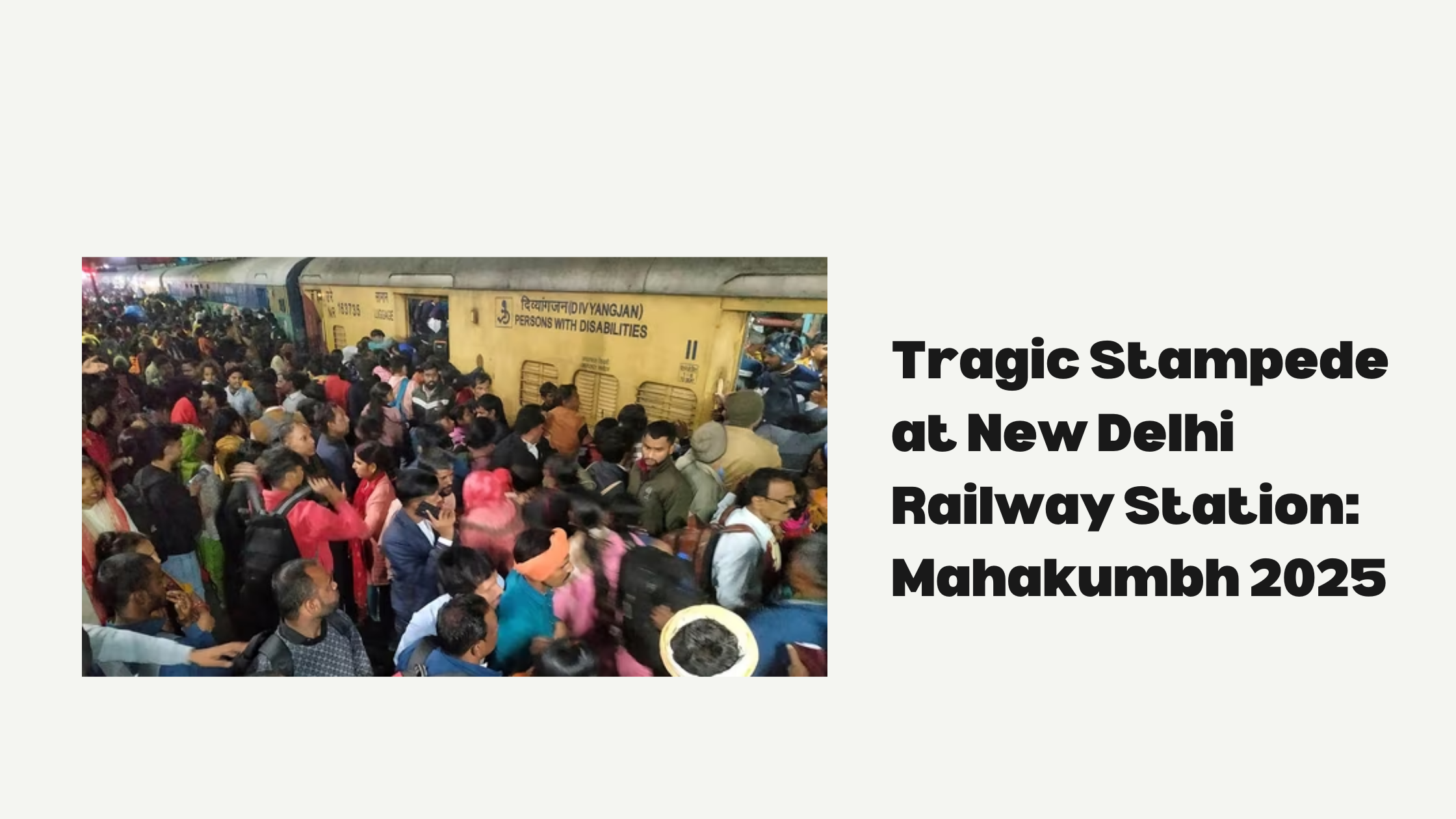The recent stampede at New Delhi Railway Station has left the nation in shock and mourning. The incident, which resulted in multiple casualties and injuries, has raised serious concerns about railway crowd management, safety protocols, and infrastructure. With millions of passengers traveling daily, Indian railway stations, especially major hubs like New Delhi, often witness overcrowding. However, the tragic event highlights critical gaps in handling such large crowds, particularly during peak seasons and special occasions.
Stampede at New Delhi Railway Station : Mahakumbh 2025
The stampede reportedly occurred when passengers waiting for a train faced confusion due to last-minute platform changes. According to eyewitness accounts, a massive rush ensued as people scrambled to get to the correct platform. The situation worsened when passengers coming from different directions collided, leading to panic and chaos.
Railway authorities had initially announced that a particular express train would depart from one platform but later changed it at short notice. This led to a sudden surge of passengers attempting to move through the narrow staircases and overbridges, causing a human bottleneck. As the pressure mounted, people began to fall, triggering a chain reaction that resulted in the stampede.
The Victims and Casualties
Reports indicate that several people lost their lives, while many others sustained injuries ranging from minor bruises to severe fractures. The majority of victims included elderly passengers, women, and children who were unable to escape the crushing force of the crowd.
Emergency services were deployed immediately, but the sheer scale of the incident made rescue operations challenging. Passengers who managed to escape described scenes of absolute horror, with people screaming for help, struggling to breathe, and attempting to climb over one another to reach safety. Some passengers fainted due to suffocation, and others suffered injuries in the stampede.
Possible Causes of the Stampede
Several factors contributed to the tragic event, including:
- Overcrowding: New Delhi Railway Station is one of India’s busiest railway terminals, handling thousands of passengers at any given time. The rush was further exacerbated by a festival season, leading to an overwhelming number of travelers.
- Poor Communication: Confusion regarding platform changes created panic among passengers. Had there been clear and timely announcements, the chaos could have been minimized.
- Inadequate Infrastructure: The existing footbridges, staircases, and waiting areas are often insufficient to handle such large crowds. The lack of alternative routes further complicated evacuation efforts.
- Lack of Crowd Control Measures: The absence of adequate security personnel, barricades, and queue management strategies contributed to the disaster.
- Passenger Behavior: In the absence of a structured movement system, passengers tend to rush towards platforms without following orderly procedures, increasing the risk of mishaps.
Response from Authorities
Following the tragedy, railway officials, local police, and emergency response teams were quick to arrive at the scene. Rescue operations included providing medical aid to the injured, clearing the affected area, and assisting stranded passengers.
The government has since ordered an inquiry into the incident, promising strict action against any lapses. The Railway Minister expressed deep sorrow over the loss of lives and announced compensation for the victims’ families. However, beyond monetary relief, there is an urgent need for long-term solutions to prevent such incidents in the future.
Lessons to Be Learned
This unfortunate event underscores the urgent need for enhanced railway safety measures. Some key takeaways include:
- Better Communication Systems: Railway authorities must improve their communication with passengers, ensuring that platform changes and train schedules are conveyed clearly through public address systems, digital boards, and mobile notifications.
- Enhanced Crowd Management: Deploying additional security personnel, establishing queueing systems, and using AI-driven crowd monitoring can help prevent similar disasters.
- Infrastructure Improvement: Expanding footbridges, installing additional staircases, and increasing the width of platforms can provide safer movement pathways for passengers.
- Public Awareness Campaigns: Educating passengers about safety measures, emergency protocols, and responsible behavior at railway stations can significantly reduce the risk of stampedes.
- Use of Technology: Implementing real-time crowd monitoring through CCTV surveillance, thermal imaging, and AI-driven analytics can help authorities manage high footfall efficiently.
Comparisons to Past Incidents
Unfortunately, stampedes at railway stations and religious gatherings are not uncommon in India. Similar incidents have occurred in the past, such as the 2017 Elphinstone Bridge tragedy in Mumbai, where overcrowding led to the deaths of over 20 people.
Each of these tragedies follows a similar pattern—lack of proper crowd control, inadequate communication, and insufficient infrastructure. While inquiries are conducted and compensations announced, long-term preventive measures often remain unimplemented, leading to repeated disasters.
Conclusion
The New Delhi Railway Station stampede is a stark reminder of the urgent need for systemic reforms in railway crowd management. With the ever-increasing passenger load, authorities must prioritize safety, invest in modern infrastructure, and adopt smarter crowd control techniques.
While the loss of lives cannot be undone, the lessons from this incident must serve as a wake-up call for Indian Railways to implement robust safety measures and ensure that such tragedies do not recur in the future.
Join us for Free prediction and More information about cricket join us on our Telegram channel

